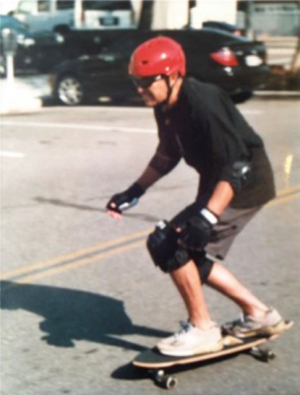Connect With Us
Blogs
Displaying items by tag: neuropathy
Facts about Alcoholic Neuropathy
Neuropathy refers to nerve damage. One source of neuropathy in the feet is alcoholism. It’s important for patients to be forthcoming with the foot doctor about alcohol intake. In honor of National Alcohol Awareness Month we at Superior Foot & Ankle Care Center would like to offer the following facts about alcoholic neuropathy:
- The ethanol found in alcohol damages nerve tissue.
- In addition, poor diet and lack of certain vitamins (also common in alcoholics) can contribute to nerve damage.
- Symptoms of alcoholic neuropathy include: loss of sensation and numbness, tingling, pain, burning, muscle spasms and muscle weakness.
- Nerve damage caused by overuse of alcohol is usually permanent.
- There are other possible causes of neuropathy that our podiatrists, Dr. Victoria Foley and Dr. Constance Omelas will need to rule out. They will start by examining your feet and may order blood or other tests such as nerve conduction and nerve biopsy.
- Potential dangers of alcoholic neuropathy include greater likelihood of injury due to lack of sensation. Similarly, conditions such as athlete’s foot can progress to the point of open sores because the patient does not perceive the symptoms in their earlier stages. Infections are more likely to develop in these scenarios. Muscle dysfunction can increase the chance of falls.
- There are treatment options available to lessen the symptoms of alcoholic neuropathy such as B vitamins, prescription medications for pain, galvanic stimulation, magnetic therapy and orthotic inserts.
- To prevent further nerve damage from occurring, patients with alcoholic neuropathy must stop drinking. If you want information on treatment for alcoholism you can ask the foot doctor for a referral or visit ncadd.org.
If you have noticed signs of neuropathy in your feet or have other questions about this condition contact our Long Beach office to schedule an appointment by calling: 562-420-9800.
Don’t Let Diabetes Slow You Down
Meet Joe Plank: He’s 81 years old and loves to skateboard! A Long Beach resident, Joe works as a grief counselor at the VA, helps autistic children in the county of Orange and enjoys lots of activities with his daughter and her family. Joe also has diabetes. As a patient of Superior Foot & Ankle Care Center, we see Joe as living proof that diabetes doesn’t have to stop you from living a full and (very!) active life.
One of the best ways to help control your blood sugar is through exercise. In addition, many diabetic patients suffer from neuropathy and circulation issues. Exercise is an excellent way to keep the blood flowing. Before skateboarding, Joe was an enthusiastic surfer for more than 6 decades. Although the activities that you choose may change over time, it’s important to make exercise and fitness a lifelong habit. Our board certified foot and ankle surgeons, Dr. Victoria Foley and Dr. Constance Omelas can make recommendations of activities and footwear that would best suit your feet and ankles. Your podiatrist can also tell you other ways to help take care of your feet if have diabetes. A few items that should be on your daily foot care regimen checklist include:
- Wash feet with a mild soap and warm (not hot) water. Dry completely, especially between the toes (to help prevent athlete’s foot).
- Inspect your feet, toes and ankles for changes. Look for swelling, cuts, bruising, changes in color, shape or size, bumps, rashes or blisters. Report anything unusual to the foot doctor immediately.
- Apply a rich moisturizer to keep feet supple and prevent skin and heel cracks.
- Keep toenails cut straight across and not too short to prevent ingrown nails from developing.
If you want to learn more about diabetic care and how to maintain an active lifestyle with this disease, contact our Long Beach office. And, be sure to wave to Joe if you see him skate boarding at Huntington Beach Pier. Remember, as Joe says, “Being a geezer is a conscious choice.”
Preventing Diabetic Foot Problems
Did you know that more than 60% of all non-traumatic lower limb amputations are the result of complications from diabetes? The good news, however, is that you can reduce your risk of amputation by up to 85% and of other diabetes related foot problems as well by partnering with you podiatrist. November is National Diabetes Month and we at Superior Foot & Ankle Care Center want to help you prevent foot health issues commonly associated with diabetes.
Detecting Trouble Early
Neuropathy or nerve damage frequently affects patients with diabetes. Lack of feeling in your feet make it difficult to perceive pain, temperature changes and other signs that typically let your body know there’s a problem. As a result, sores and ulcers, calluses, infections and skin problems can all develop to a fairly serious level before being detected by the patient. One of the best steps you can take to prevent diabetic foot issues is to check your feet daily (or have someone do for you) for injuries or changes. Here’s what to look for:
- Changes in skin color
- Temperature changes
- Swelling of your ankle or foot
- Bruises, sores, cuts or red spots
- Dry skin, cracks in the heel or skin
- Corns, calluses and blisters
- Toenail changes—including discoloration, thickening, becoming ingrown
Avoiding Foot Issues
There are a number of ways to prevent diabetic foot problems from developing:
Visit Your Podiatrist–Diabetic patients should have two regularly scheduled exams annually with one of our board certified foot and ankle surgeons, Dr. Victoria Foley and Dr. Constance Omelas to check the health of your feet. In addition, if you notice any of the changes listed above, you should make an appointment immediately.
Wear Properly Fitted Shoes–It’s essential that shoes have a roomy toe box and enough room to prevent cramping and also so that no rubbing or friction against the skin occurs.
Don’t go Barefoot–Even at home, the risk of cuts, injuries and infections are too great.
Exercise–A moderate exercise program (approved by your physician) will help improve blood flow to the feet as well as control blood sugar and weight—all key for managing diabetes.
If you have more questions on diabetic foot care, don’t hesitate to contact our Long Beach office at: 562-420-9800.



